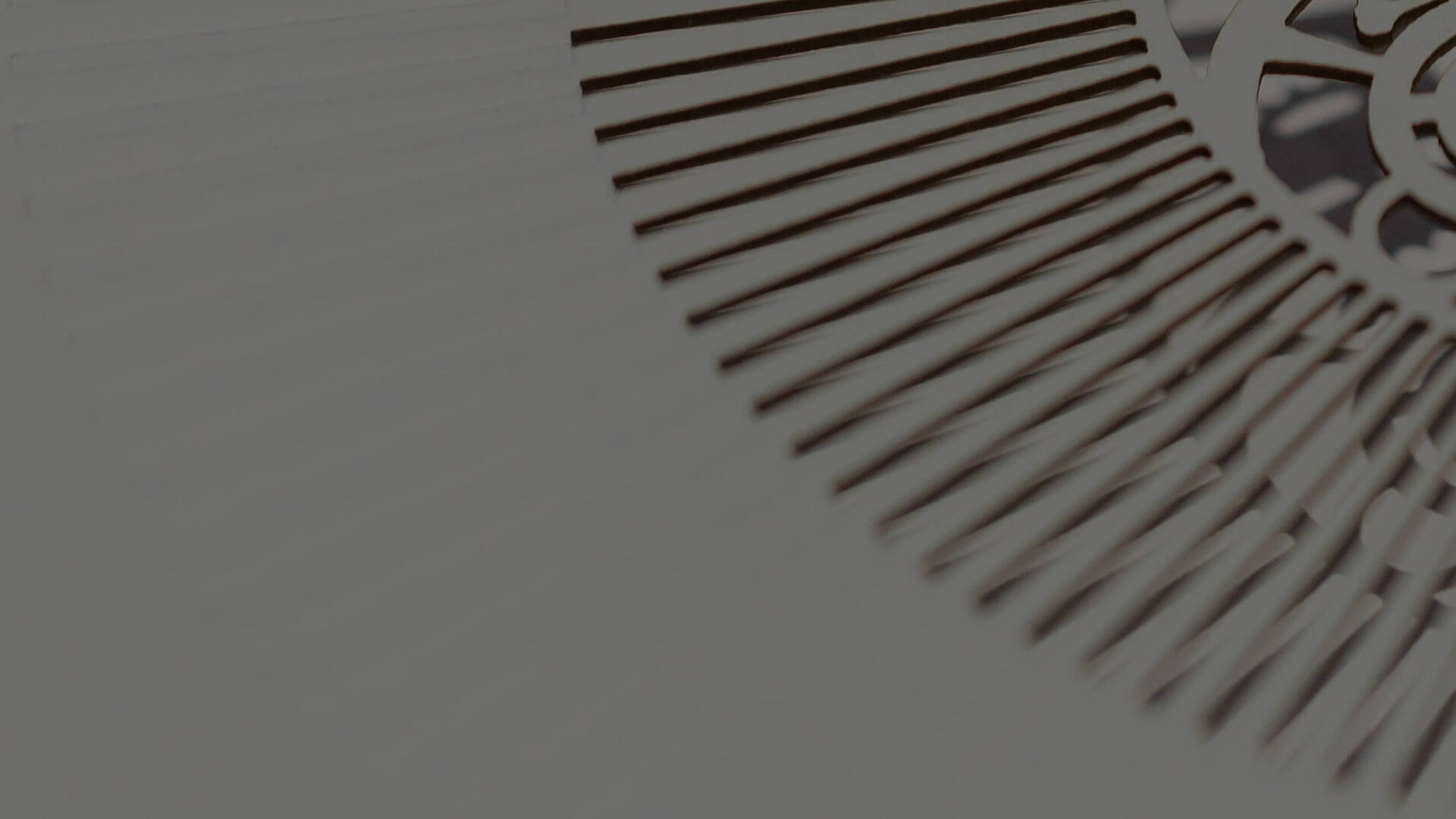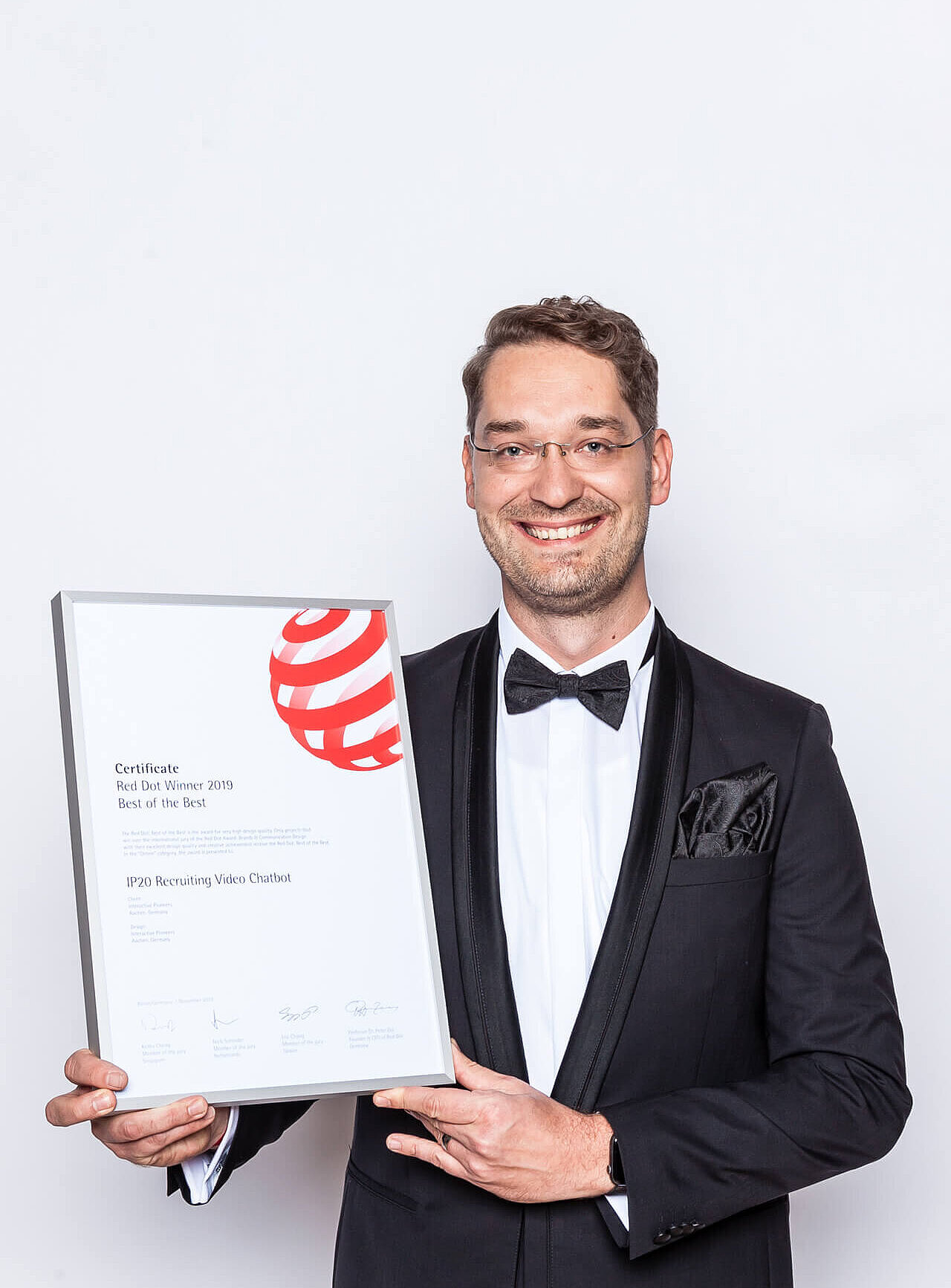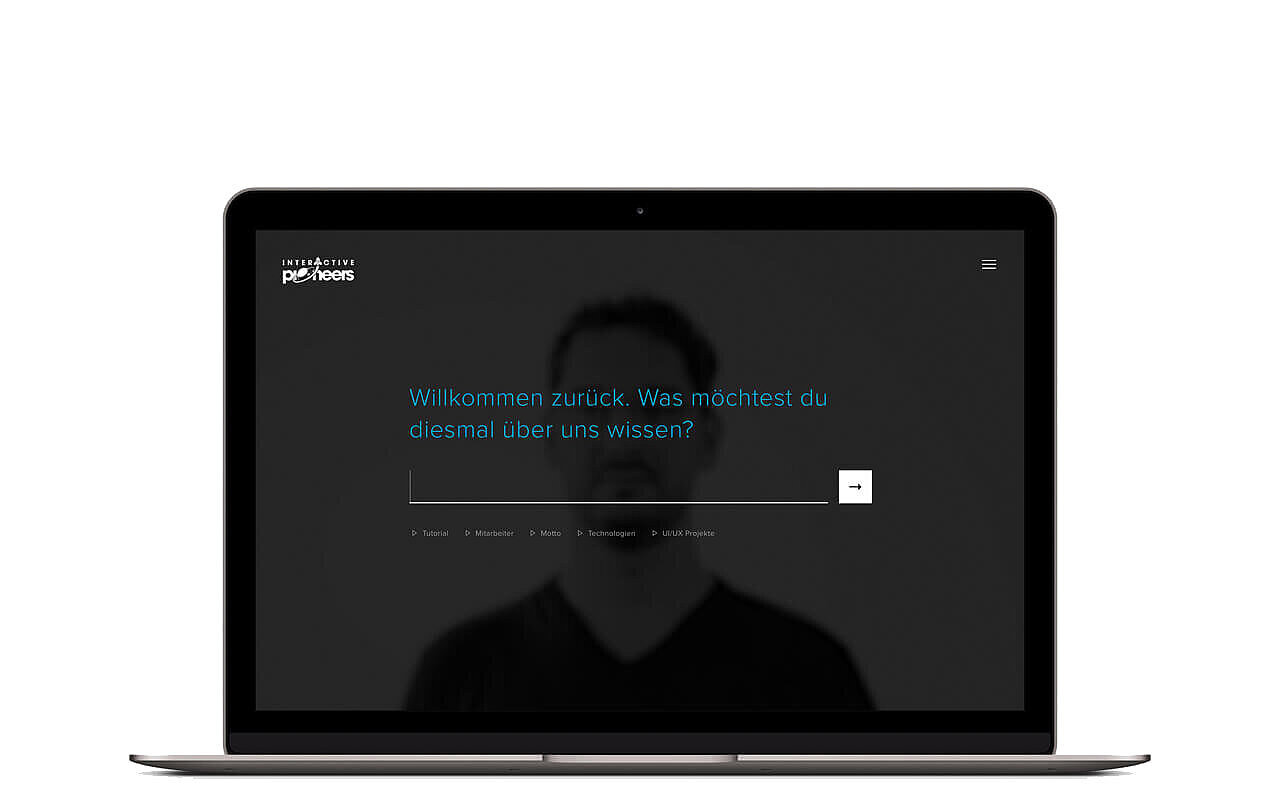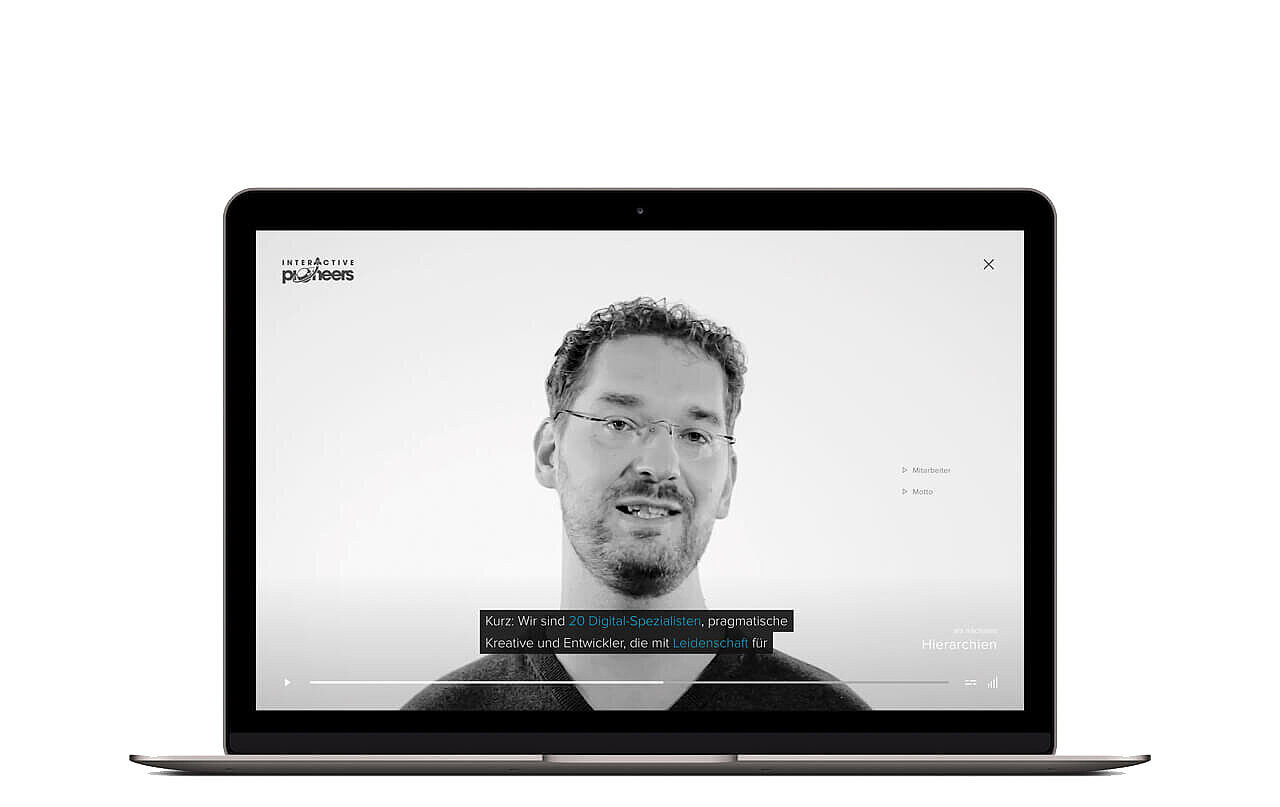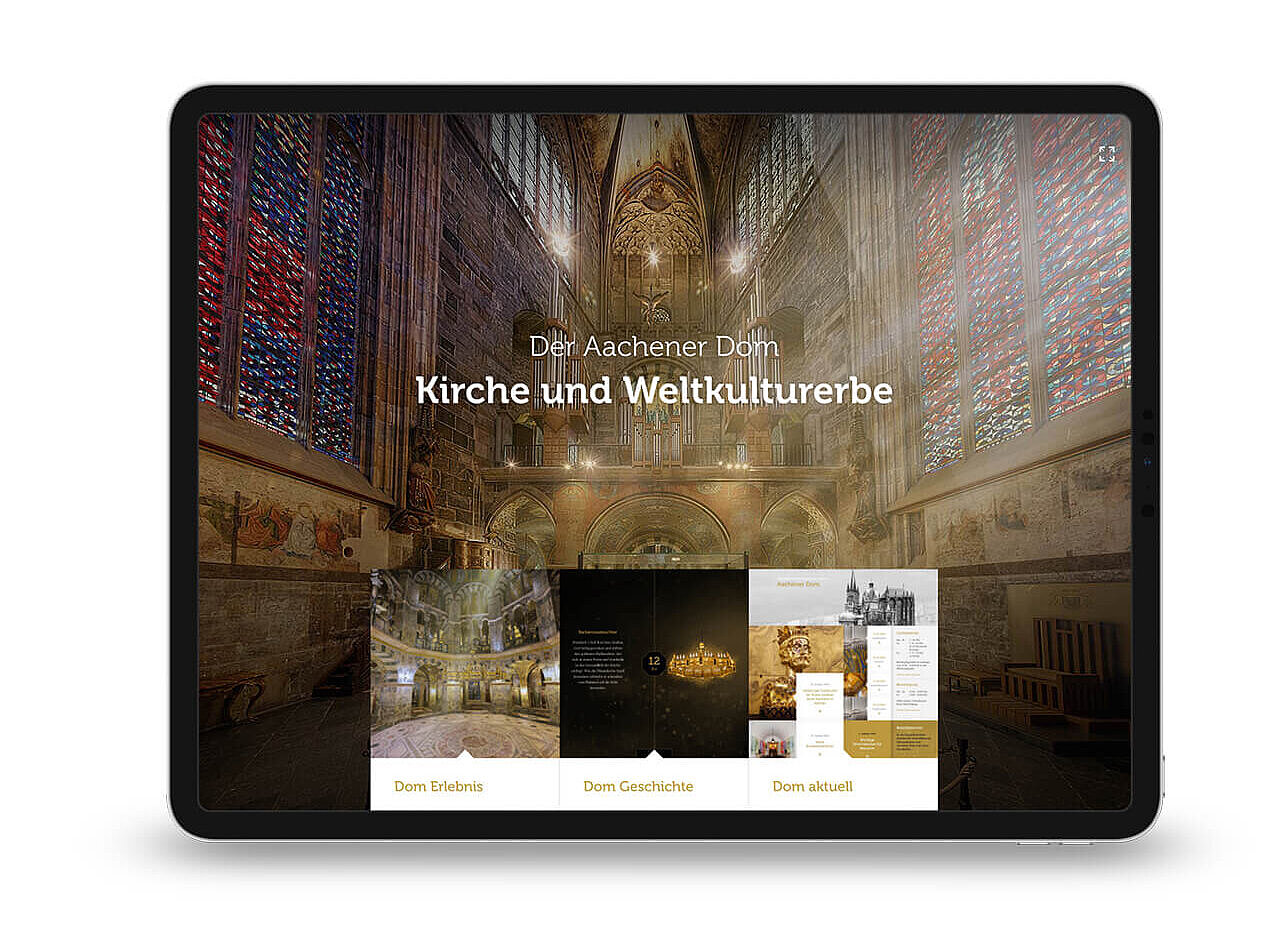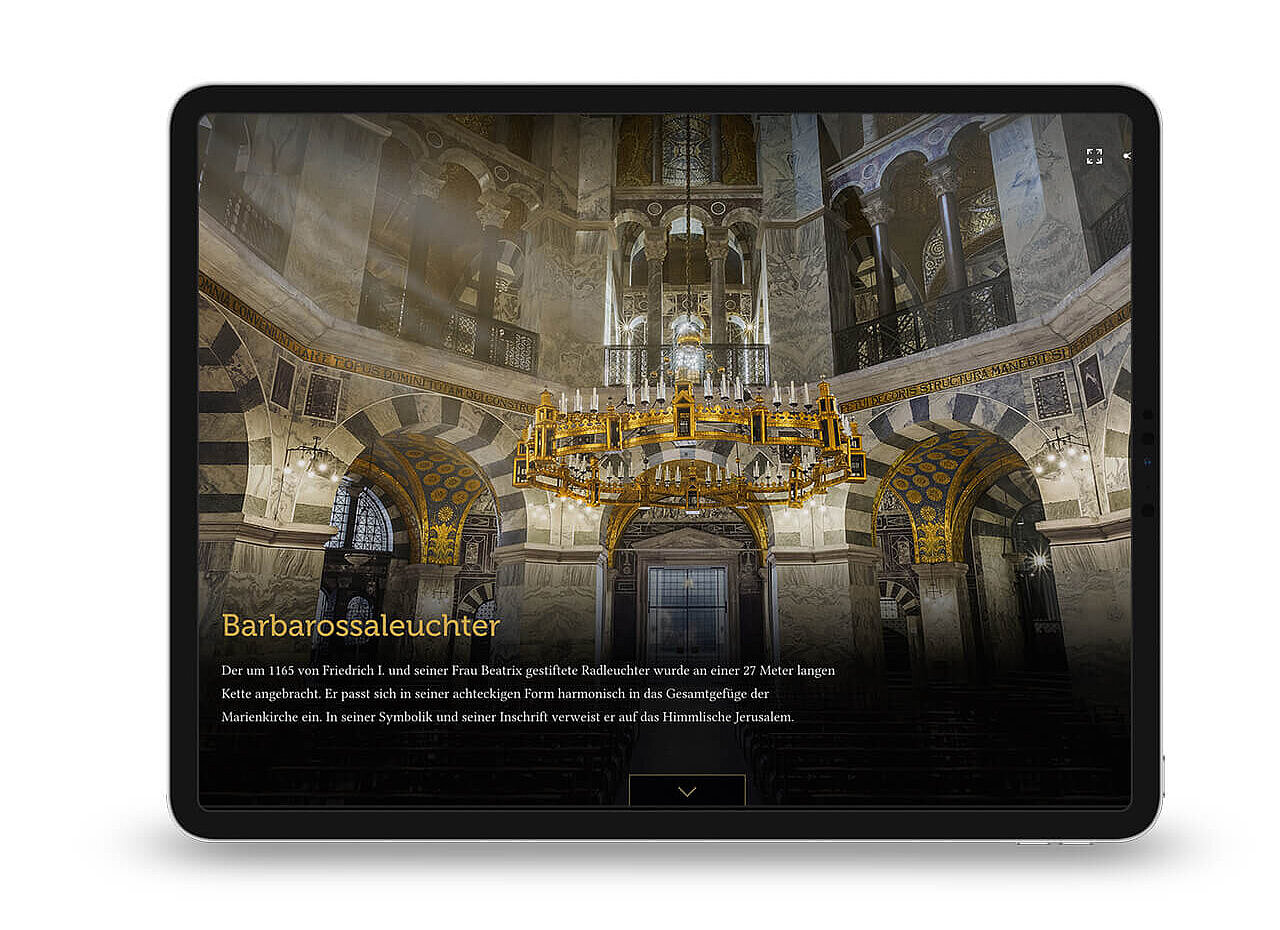Messenger chatbots aim to provide precise, automated answers to recurring customer requests. This has made them a relevant communication tool for companies. The digital brand studio “Interactive Pioneers” has taken this technology to a whole new level, with a video chatbot integrated in the agency’s website that is geared to clients and job applicants alike. It supplements the text-based chatbot with an emotional and visual component. The artificial intelligence used selects pre-recorded videos to respond to over 200 questions about the company. Interactive Pioneers received a Red Dot: Best of the Best in the Red Dot Award: Brands & Communication Design in 2019 for this work.
Red Dot spoke to Carlo Matic, owner and founder of the studio, about the opportunities and challenges stemming from fundamental changes that are arising from digitalisation.
Red Dot: How did the idea for the IP20 Video Chatbot come about?
Carlo Matic: We wanted to give ourselves the gift of a new website for our 20th anniversary. We approached the project in a user-centred way. First of all, we collected the 200 responses that we would have to provide. Because of the volume, it wasn’t an option to use a traditional menu. So chatbot technology soon came to mind. But we were not convinced by the usual user experience, because we wanted to have an authentic encounter with the visitors to our website. Adding a video component meant that we could improve usability significantly. Talking to our chatbot almost feels like having a real conversation with me.
What changes did you make over time?
Our work on the chatbot is ongoing – for example, at the IFA we used a physical installation. We launched it this year as a product and are marketing it for other clients. We are now able to use a 15-minute recording to generate response videos automatically using deepfake technology. While we don’t make use of this solution ourselves, it is used in roughly half of our client projects. This approach is suited to support queries, for example. In addition, we are gradually broadening the channels used for the chatbot – for example in messenger services and on smart displays etc.
Coming to the topic of change, why is continuous development important?
Particularly due to globalisation and digitalisation, the world is getting faster and faster. It’s not always easy to keep up, but it’s better to disrupt ourselves than to have others do that for us. Not developing further is no longer an option.
What is the biggest challenge in change processes?
The biggest challenges are existing structures, internal resistance or a strong internal view. To break down these barricades, we use tangible solutions to show our clients that a change can create added value. It is often helpful to use mock-ups, prototypes or abstract games that make it easier to visualise the future. We call this process the “time machine” because it allows us to test potential solutions with the real target group before starting with development.
“Change as a Chance” is the slogan for the Red Dot Award: Brands & Communication Design 2021. What do you associate with this idea?
Change is a Chance – always! It’s strange that we even still need to emphasise this in 2021, but this motto is more relevant now than ever. We are constantly using too much energy in an effort to prevent change. If we used even a fraction of that energy to steer change in a way that is positive for us, we would all be successful faster. I am convinced that we cannot stop change. But we can be a part of it and make it work for us.
What role does digitalisation play in this respect?
Digitalisation is a catalyst and an accelerator. Anything that can be digitalised will be digitalised. The sooner we accept that, the better. Conversely, this also means that there will be millions of other interfaces and services that can be used for our ideas. For example, small start-ups will suddenly be able to access extremely expensive AI from Google or an open source alternative. The combination of innovations available will make it faster and easier to create something really big and new – a wonderful playground.
To what extent can digital solutions pose an opportunity in times of crisis?
Apart from the chatbot, we are seeing this with another project that also won the Red Dot: Our task for the fly-through of Aachen Cathedral was to make people want to visit this complex Romanesque structure, but not to replace a real-life visit. We created a digital twin using 3D scanning technology. Because most of us can only experience this impressive world heritage building virtually at present because of the coronavirus, however, the fly-through has become a temporary replacement.
Can digital solutions like this one replace personal meet-ups?
Digital solutions are not a replacement for real-life encounters. They are a great addition. We no longer have to fly half-way around the world for every project. In some cases, online content even gives a whole different view on things, new perspectives and additional information. They conserve knowledge, expand teaching possibilities and facilitate flexible learning. The cathedral fly-through, for example, allows people to see things that normal visitors cannot experience on the ground. But it can never replace the impressive experience of standing in Aachen Cathedral for yourself.
To come back to the topic of further development, what have the Red Dot awards changed for you?
Above all else, we are extremely proud of the awards. They have given us a fantastic platform for gaining more visibility. This makes our clients proud and potential clients curious. And the Red Dot mark of quality also attracts talent. The war for talent is taking place all over, and we thrive when the best talent knows about us and wants to work for us. We have seen the effect of the awards reflected in the number of job applications we receive. That’s even how Zeljko Pezely, who was the Creative Director at Heye in Munich at the time, found out about us. He is now my partner as the Head of Creative.
The Red Dot: Best of the Best in 2019 also provided the impetus for a special Christmas party, where the whole company travelled to Berlin for the award ceremony and spent the entire week celebrating there.
